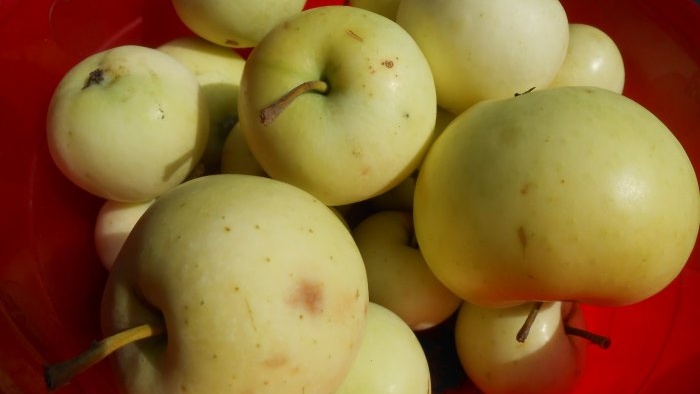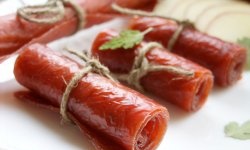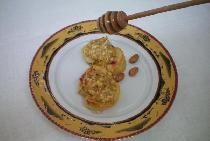The end of summer and autumn is the period of mass ripening of apples and pears. Fruits that fall to the ground are called carrion, regardless of what caused the fall: strong wind, characteristics of the variety, diseases or pests. Good apples that have fallen from the branches due to being overripe or knocked down by rain and wind can be safely processed by drying, compote or juice.
It should be remembered that fallen apples cannot be stored at all, so they need to be picked up in a timely manner and quickly used for culinary purposes.
But rotting fruits must be regularly collected and removed from the site, as they are a source of fruit rot and other dangerous diseases of garden trees, as well as a haven for codling moths and other pests of cultivated plants.However, many zealous gardeners successfully use carrion in the preparation of valuable organic fertilizer and to create warm beds, eliminating the need to look for space in landfills or bury fruits in burial grounds.
Composting carrion
Rotten apples and pears are excellent composting materials. If certain rules are followed, the carrion produces a universal fertilizer, with which you can significantly increase the soil fertility on the site. When products decompose in a closed compost bin, the temperature inside the waste heap rises to +60, due to which both pathogenic microorganisms and pest larvae are destroyed.
How to properly compost rotten plant debris?
1. Compost from carrion takes 2 years to mature.
2. Composting should be carried out only in a closed manner. Rotten apples piled openly, as well as fruits lying under trees, attract many insects. And spores of various rots multiply very quickly in them.
3. If you are going to compost carrion in a heap, then its top should be covered with a layer of earth and covered with polyethylene on top, limiting the access of air to the decomposing materials.
4. Layers of carrion must be interlayered with earth, peat and green matter (intermediate layers of soil and mown grass - 15 cm). The last layer in the compost bin is soil.
5. Microbiological preparations with effective microorganisms help speed up the maturation of compost and clean products from phytopathogens. They are added when putting materials into a compost bin (green trichoderma), and are also used to moisten the decomposing mass in the form of aqueous solutions (“Baikal”, “Shine”).
6.To normalize the acidity of the future fertilizer during composting, alkaline products (chalk, dolomite flour, stove soot and ash, lime) are certainly added to the carrion.
Fully ripened fertilizer has a loose and crumbly structure, it is rich in vermicompost and all the macro- and microelements necessary for plants. Compost from carrion is useful for all garden crops and can be used at any time of the year, both during spring pre-sowing cultivation of the land and for mulching plantings before winter.
Arrangement of warm beds
In areas of the garden freed from the main crops at the beginning of autumn, experienced summer residents recommend making warm beds. Organic materials buried in a half-meter layer decompose quickly enough, saturating the soil with humus, nitrogen, phosphorus, potassium, and microelements. Such areas are ready to receive plant seedlings and seeds in mid-spring.
First of all, a trench is dug in the garden bed to a depth of 40-50 cm, the bottom of which is filled with a thick layer of carrion sprinkled with deoxidizers (chalk, dolomite flour, slaked lime, ash). Mown grass, remnants of tops or unseeded weeds are placed on top of apples and pears. To destroy pathogenic microflora, preparations containing trichoderma are added to organic matter. The materials laid in the furrow are covered with soil, and the beds are compacted.
With the arrival of spring warmth, the processes of decomposition of organic matter in the upper layer of soil are activated, which occur with the release of heat. Such warm beds make it possible to obtain early harvests of all pumpkin crops (zucchini, cucumbers, squash), which require large doses of nutrients and stable soil temperature for the development of the root system.Also, in warm beds filled with carrion and grass, excellent harvests of all types of cabbage, as well as legumes, are obtained.
Easy work for you in the garden!















